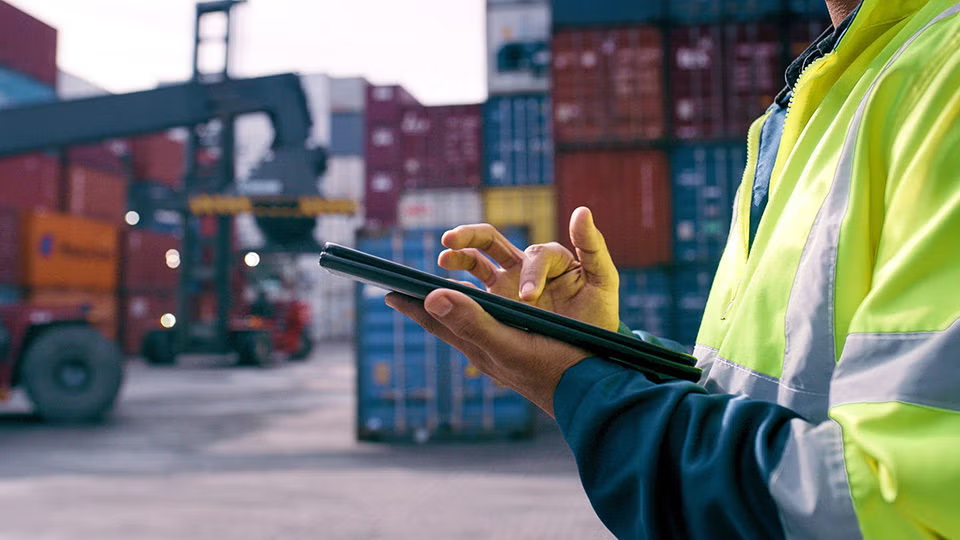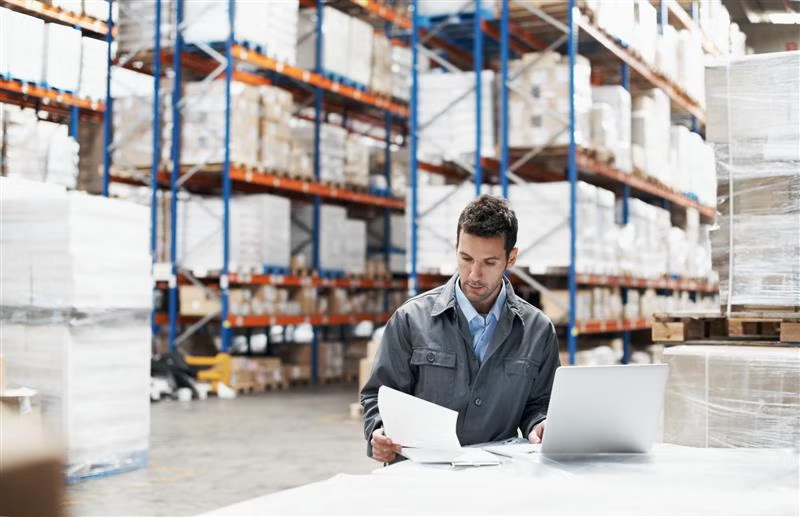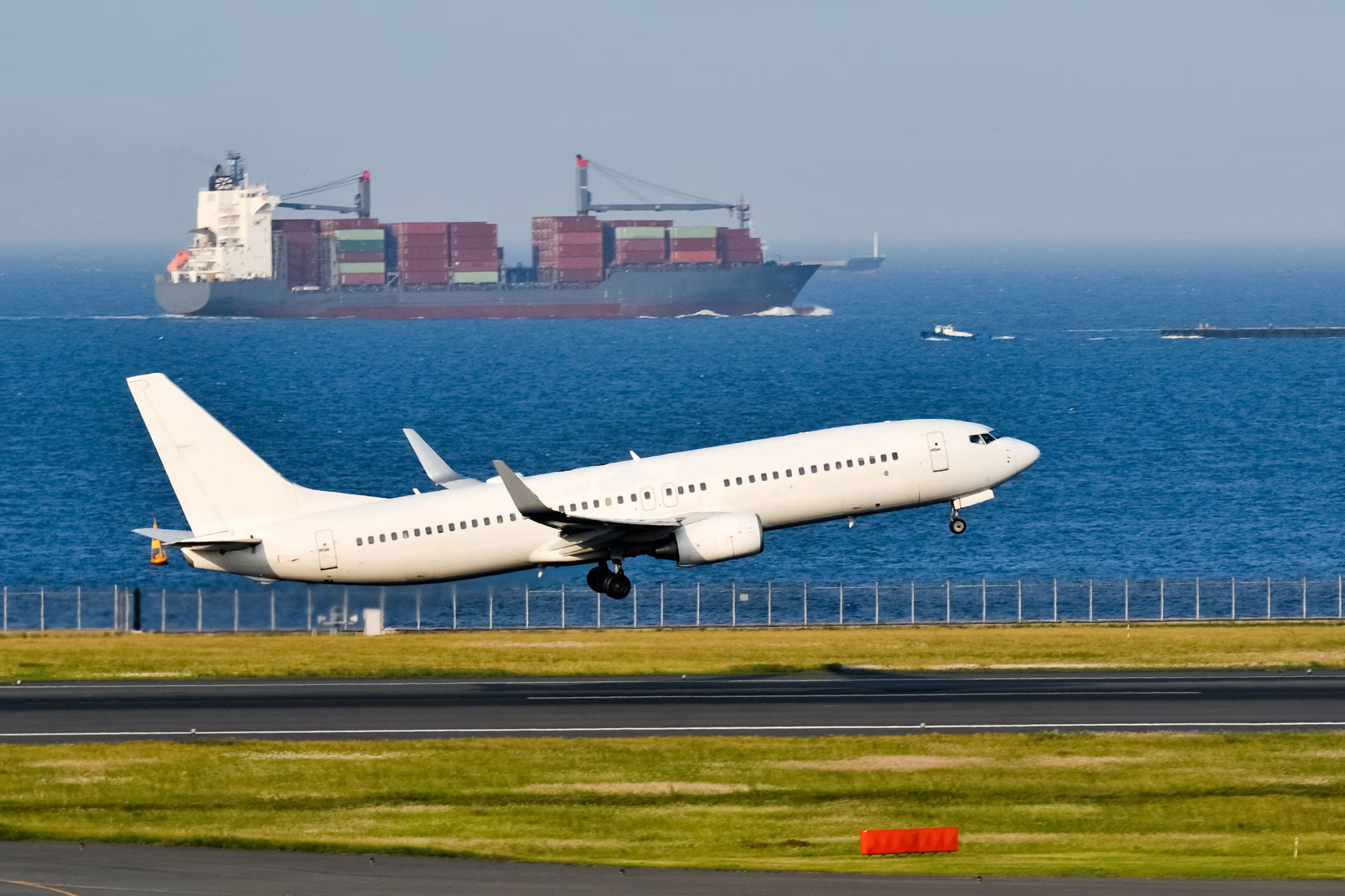Freight and Logistics News and Market Update
Week of September 17, 2025
Top Takeaways
Global Trade Pressures Mount as US–Europe Exports Decline, Ocean Oversupply Grows and New US Port Fees Loom
true
- US exports to the EU dropped 3.4% in Q2, and August saw a 4% month-over-month decline in volumes from North America. Freighter capacity on US–Europe routes also shifted downward by about 4%, reflecting a broader reallocation of global trade lanes.
- Sea freight is oversupplied, with Asia–North Europe capacity up 8%, blank sailings down to 3.8% and spot rates on key lanes falling below breakeven as carriers resort to late blankings and slow steaming.
- Starting October 14, new US fees (USD $300–600 per container) will reshape vessel deployment. Carriers like MSC, CMA CGM, and Cosco are already diverting fleets, which affects how global capacity is allocated and could influence rates and service reliability far beyond the US.
Regions
North America
Air
- S&P Global reported that US consumer prices rose 2.9% in August, outpacing expectations. Business surveys point to more sharp increases ahead, but whether inflation develops into a lasting concern will depend largely on the resilience of business and consumer confidence.
- Tariffs and regulatory changes are reshaping transatlantic trade. US exports to the EU dropped 3.4% in Q2, and August saw a 4% month-over-month decline in volumes from North America. Freighter capacity on US–Europe routes also shifted downward by about 4%, reflecting a broader reallocation of global trade lanes.
Ocean
- Ports America absorbed a 30% tariff on a China-built ship-to-shore crane delivered to Gulfport, Mississippi, boosting the price from $16 million to nearly $21 million. Rather than risk future tariff hikes or leave the crane idle, the company chose to spread the added cost over time without charging customers directly. The move allows Gulfport’s expansion to proceed while highlighting the broader pressure US ports face from higher-priced Chinese equipment.
- Mediterranean Shipping Co. has restructured its global vessel network to limit exposure to upcoming US port fees on Chinese-built or -operated ships, which could add $300–$600 per container beginning October 14. CEO Soren Toft assured customers the carrier’s adjustments will keep service reliable, with the added expense absorbed internally. The shift mirrors steps taken by CMA CGM and Cosco, which have also diverted Chinese-built vessels from US routes to reduce the impact of the new charges.
- CMA CGM’s adjustments to its US services will allow shippers to avoid surcharges tied to new port fees taking effect October 14. The fees could reach $1–3 million (USD) per call and are set to rise through 2028. Vessels such as the Hermes and Osiris have been shifted to Middle East and West Africa trades. With a fleet sourced from both Chinese and South Korean yards and new orders placed, CMA CGM emphasized its flexibility and is evaluating future US shipbuilding opportunities.
true
Latin America
Air
- Xeneta reported that global air cargo volumes rose 5% year-over-year in August 2025, while available capacity increased 4%. The end of the US de minimis exemption is expected to impact low-value shipments from Canada, the United Kingdom and Mexico, mainly affecting eCommerce and B2B flows.
- Delta Cargo is expanding its South American network as tariff tensions weigh on China–US trade. In partnership with LATAM Cargo Colombia, the carrier recently launched new interline services from Los Angeles and Seattle to São Paulo, increasing southbound capacity while balancing northbound demand for perishables. Delta reported a 14% year-over-year rise in cargo revenue in 2024, reaching $822 million (USD), and remains optimistic about further growth through its LATAM alliance and new investments.
Ocean
- Brazilian ports moved a record 124.7 million tonnes of cargo in July, the highest monthly total ever. Of this, 73% came from imports and exports and 20% from cabotage trade. Solid bulk led the increase with more than 76 million tonnes, supported by gains in liquid bulk, containers and general cargo.
- The Panama Canal Authority (ACP) has introduced a NetZero slot allocation program that gives preferential access to dual-fuel vessels as part of its sustainability strategy. Launching with a competitive tender on October 5 for transit slots in the week of November 8, the initiative rewards ships capable of operating on low-emission fuels such as ammonia, LNG and hydrogen. Winning carriers gain benefits including choice of transit dates, guaranteed 24-hour passage, Just-In-Time scheduling and the ability to substitute equivalent vessels. With about 120 dual-fuel ships already in service, representing half of new global orders, the program positions the Canal as a leader in sustainable shipping.
Asia-Pacific
Air
- The removal of de minimis exemptions on China–US eCommerce shipments has driven down volumes from mainland China and Hong Kong while shifting flows to Southeast Asia and other Asia Pacific origins. Airlines across the region saw strong July growth as exporters diverted shipments and leveraged tariff pauses, accelerating diversification beyond China. This shift underscores the rising role of emerging Asia Pacific eCommerce hubs in meeting US and European demand.
- Global air cargo demand rose 5.5% year-over-year in July as shippers front-loaded goods ahead of US tariff deadlines, offsetting weaker China–US volumes after de minimis exemptions ended. Asia Pacific carriers posted the strongest regional growth at 11.1%, while the Europe–Asia corridor recorded the largest trade-lane gain at 13.5%. Emerging hubs are expanding quickly, with Vietnam Airlines boosting capacity 95% year-over-year in August to 2,400 tonnes and Bangladesh adding Hong Kong–Dhaka services. Despite the rebound, global air freight rates slipped 1.7% in late August, underscoring continued pricing pressure.
- China’s airfreight market is shifting from the US to Europe, with August volumes from China and Hong Kong to the US down 5% year-over-year while flows to Europe rose 11%, according to WorldACD. The shift reflects new US tariffs and the removal of de minimis exemptions, leading carriers to redeploy freighter capacity to Europe-bound lanes. Globally, air cargo demand grew 3% in August, though rates fell 3%, including a 9% decline on China–US lanes while China–Europe pricing held steady. Asia Pacific origins remained the strongest growth driver, with volumes up 7% year-over-year.
Ocean
- Sea freight markets remain oversupplied, with capacity on the Asia–North Europe lane up 8% year-over-year and only 3.8% of planned sailings blanked, compared with 15.4% a year ago. Weekly capacity swings on the lane have reached 30%, more than double pre-pandemic levels, leading to erratic cargo flows and congestion at ports. On the transatlantic, blank sailings are still under 2%, even as westbound spot rates fall below breakeven, underlining the tension between protecting market share and profitability. Carriers are responding with late-stage blankings, slow steaming and two-tier pricing to manage excess capacity.
- Shortages of feeder vessels in Southeast Asia are disrupting supply chains, delaying transshipments and creating congestion at major hubs including Singapore, Shanghai, Ningbo and Port Klang. Rising demand from tariff related cargo shifts has stretched available feeder capacity, while carriers choosing direct services over transshipment routes has worsened the squeeze. As a result, shippers, particularly US exporters, are facing rolled cargo, limited space and increased uncertainty.
- Intra-Asia carriers are contending with full vessels and rolled cargo as exports from Indonesia, Vietnam and Malaysia climb ahead of China’s October manufacturing slowdown. The surge reflects stronger Southeast Asia sourcing driven by US tariffs on Chinese goods, which has lifted intra-Asia freight rates even as trans-Pacific and Asia-Europe spot prices continue to fall. Operators including CNC Line, SeaLead, CK Shipping and PIL have launched new Indonesia-focused services, while analysts expect a brief easing during China’s October holiday before volumes and rates pick up again in the fourth-quarter peak season.
Europe
Air
- European airports recorded a 1.5% year-over-year decline in cargo volumes in July, with EU+ hubs down 2% and non-EU+ hubs up 2.1%, according to ACI Europe. Among the major airports, Frankfurt grew 4.6% to 171,893 tonnes, while Heathrow, Liege, Cologne, Madrid, Luxembourg and Milan also posted gains. In contrast, Istanbul fell 3.4% to 165,343 tonnes and Schiphol dropped 10.8% amid operational issues. Despite July’s dip, year-to-date volumes are up 1.5% and remain 10.4% higher than pre-pandemic levels.
Ocean
- Marine fuel quality concerns are mounting in Europe, with recent testing showing that over half of very low sulfur fuel oil (VLSFO) samples were off-spec. Problems included excessive sediment, poor blending and contamination, alongside high catalytic fines, viscosity inconsistencies and sludge formation. These impurities pose serious risks to ship engines, from clogging and accelerated wear to potential blackouts. Experts caution that without effective onboard testing, operators face higher costs, operational disruptions and reduced emissions compliance.
- Spain has banned ships carrying fuel for the Israeli military from docking at its ports and barred aircraft transporting weapons or military-grade fuel to Israel from its airspace. The measures are part of a wider arms embargo and diplomatic response to Israel’s actions in Gaza, with Madrid also recalling its ambassador from Tel Aviv. The move follows Turkey’s similar restrictions in August, which forced Israeli carrier ZIM to reroute vessels. Meanwhile, Maersk has faced activist scrutiny over alleged arms transport, claims the company denies.
India, the Middle East and Africa
Air
- Icelandair Cargo has expanded its global network through a new partnership with Globe Air Cargo Turkiye, a subsidiary of ECS Group, launching operations in Turkey on September 5, 2025. The alliance introduces four weekly flights between Istanbul (IST) and Keflavik (KEF) using Boeing 737 MAX aircraft, designed to connect Turkish exporters to markets in the US and Europe. Key cargo sectors include textiles, automotive parts and machinery.
- EgyptAir Cargo has partnered with Cargo Flash Infotech to roll out the nGen Integrated Cargo Management System (ICMS), advancing the airline’s digital transformation and improving efficiency across its network. The cloud-based system replaces legacy platforms with a unified digital solution that streamlines booking, documentation, warehousing and delivery. By automating these processes, nGen enhances accuracy, visibility and operational performance for customers worldwide.
- SolitAir has expanded its African network with new routes to Harare and Lusaka, strengthening air connectivity for both cargo and passengers. The Dubai-based airline said the additions highlight its strategy to capture opportunities in emerging markets and improve access across the Global South. Company officials noted that more routes and destinations are planned in the coming months as part of SolitAir’s growth agenda.
Ocean
- Ocean Network Express (ONE) will launch its India–Gulf Service 2 (IG2) on September 25, 2025, providing direct weekly sailings between India and Umm Qasr. The rotation will call Mundra, Nhava Sheva, Jebel Ali and Umm Qasr before returning via Jebel Ali to Mundra. The new service is aimed at ensuring reliable cargo flows into Iraq and strengthening trade connectivity between Indian gateways and the Middle East. ONE also announced plans to adjust its Asia–North America services from October 2025.
- Mundra Port, India’s largest commercial port operated by Adani Ports and Special Economic Zone (APSEZ), has completed its first export of locomotives to Morebaya, Guinea. The initial shipment included four locomotives built at Wabtec’s facility in Marhowrah, Bihar, and carried aboard the MV BBC Washington. The move marks the start of a larger program under which Wabtec Corporation plans to export 150 locomotives through Mundra, underscoring the port’s role in supporting Indian manufacturing and global trade links.
Customs Brokerage
- Starting January 1, 2026, the US Department of Commerce will ban imports of fish and fish products from 240 fisheries in 46 countries that did not meet requirements under the Marine Mammal Protection Act. Countries lacking a comparability finding will be barred from exporting to the US, either across all fisheries or for specific ones only. To enforce the rule, US Customs and Border Protection will require a certificate of admissibility verifying harvest location and method, submitted electronically before entry.
- As of September 2, the US Fish and Wildlife Service (FWS) has introduced an online system for applying for, renewing or amending designated port exception permits (DPEPs). These permits, which allow wildlife shipments through non-designated ports in situations of scientific need, product deterioration risk or economic hardship, were previously handled on paper. The new digital platform supports electronic filing, payment, application tracking and simplified renewals by copying prior submissions.
- On September 5, the administration issued an executive order revising reciprocal tariffs under Section 232, effective September 8. The order exempts certain bullion, minerals and pharmaceuticals, while extending tariffs to some aluminum, resin and silicone products. It also allows for future reductions on items such as aircraft parts, pharmaceuticals, natural resources and selected agricultural goods, provided trade partners make reciprocal commitments aligned with US interests. While most changes require finalized trade agreements, the order makes an exception for the European Union and potentially other framework partners.
- On September 4, the administration issued an executive order implementing the new trade deal with Japan. The order applies a 15% baseline tariff on most Japanese imports, including cars and auto parts. If the existing tariff is below 15%, the new rate applies, but if higher, the current tariff remains. The measure is retroactive to August 7, 2025, with refunds available once Customs issues guidance. After formal publication, Japanese civil aircraft (excluding unmanned) will be exempt from some tariffs, while auto-related goods will remain under the 15% rate. The order also authorizes, but does not yet enact, tariff removal on selected Japanese goods such as generic pharmaceuticals and scarce natural resources.
- US Customs and Border Protection (CBP) has proposed reclassifying certain utility vehicles under HTSUS 8704.31.01 as goods transport vehicles, which would make them subject to a 25% duty. They are currently entered duty free as works trucks under HTSUS 8709.19.00. The proposal would revoke prior rulings HQ 965246 and HQ 964598, with public comments due by October 3. CBP explained that while these vehicles are not designed for public roads, their functions extend beyond confined worksites such as factories or airports, and their added safety and comfort features support the new classification.
false
This document is for informational purposes only. It does not constitute legal advice. Information herein was obtained from government, industry, and other public sources. It has not been independently verified by UPS and is subject to change. Recipient has sole responsibility for determining the usability of any information provided herein. Before recipient acts on the information, recipient should seek professional advice regarding its applicability to the recipient's specific circumstances.
More Insights From UPS Supply Chain Solutions

Navigating the 2025 Global Tariffs Landscape

2025 Tariffs and Their Impact on Global Trade – Updated August 2025

Air Freight Shipping Guide: Costs, Documentation & Quotes

Get Started with an Air or Ocean Quote
On our UPS® Forwarding Hub, get and compare quotes, book shipments and track them end-to-end on one modern, easy-to-navigate dashboard.

Stay In The Know
Get expert insights into all things freight and logistics, delivered right to your inbox.